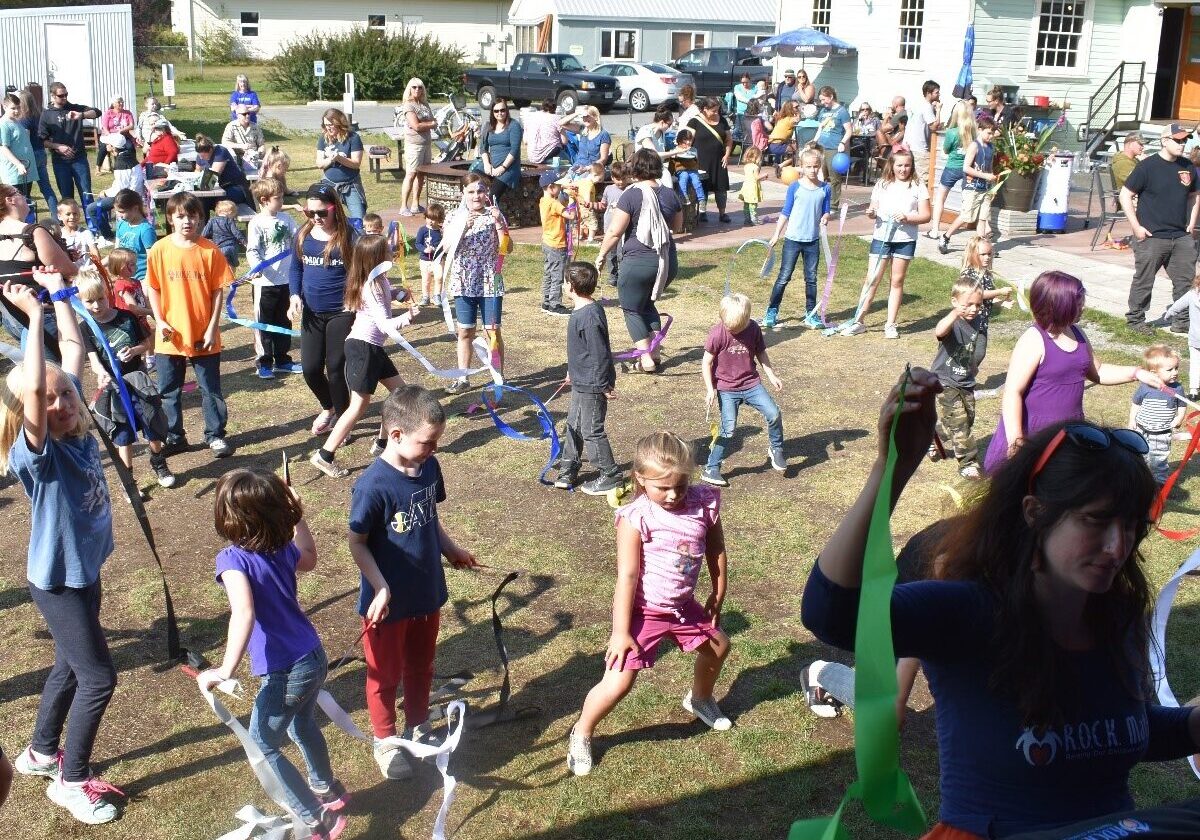How Two Funders Support Socially Connected Communities

Social isolation and disconnection have perniciously impacted our communities. These aren’t new issues, but they have been amplified by COVID and the ongoing racial injustices that leave many of us reeling and disoriented. As a result, system leaders are reflecting on their roles and opportunities to address these circumstances. As communities continue to navigate disruptive times, philanthropic leaders are stepping up to strengthen social connectedness as a critical component of collective, change-making efforts.
In late May, as part of an ongoing discussion series, Healthy Places by Design hosted a conversation with local leaders to learn how funders embed social wellbeing into their work. Amy Eisenstein, Senior Program Officer for the national RRF Foundation for Aging, and Amy Gorn, Healthy Families Program Officer with the Mat-Su Health Foundation in Alaska, kicked off the conversation.
Eisenstein, noting that isolation and loneliness impact many older adults, shared their four strategies for supporting greater connection: technology, building on what works, promoting meaningful engagement, and creating intergenerational bonds. They fund innovative research, interventions, professional training, and advocacy focused on preventing social isolation and loneliness. Examples of work that they are interested in supporting include application of developed and acceptable technologies that reduce isolation or feelings of loneliness, replication and scaling of proven models for social and intergenerational engagement.
The Mat-Su Health Foundation serves a rural Alaska borough the size of West Virginia. Gorn shared their structural drivers for social isolation including a large geographic area which makes traveling anywhere challenging. Winter is long with extended dark hours. They lack options for free, accessible activities, there are gaps in broadband coverage, and they have many people who have long commutes to work. Fortunately, having strong social connections was a top-ranked goal by residents in their 2019 Community Health Needs Assessment. Secondary data informed the development of two initiatives that address social connections: R.O.C.K. Mat-Su, a cross-sector collaborative that promotes family resilience, and Connect Mat-Su, a clearinghouse that connects residents to community services.
Early work for both foundations centered around understanding the issue and finding ways to address unique community contexts while also measuring impact. One strong theme in the conversation was interest in intergenerational approaches (which will be the topic for our September call). Eisenstein mentioned the importance of bi-directional benefit between the generations and Gorn said community conversations about what this work means across the generations raised a lot of excitement and interest.
Questions arose about how to measure impact. Eisenstein started the conversation by noting that some Area Agencies on Aging in Illinois and Wisconsin are beginning to use the 3-item UCLA Loneliness Scale as an assessment tool, which can also be used to track changes over time. Further measurements around social connectedness (vs. loneliness) are still in the development and testing stages. Gorn mentioned three tools they use: existing questions about belonging in the Youth Behavioral Risk Factor Survey, the Community Health Needs Assessment, and photovoice to capture resident perspectives. Session participants also lifted the importance of using local data to create or adjust organizational investments around social connectedness.
The COVID pandemic created greater challenges and more awareness about the importance of this issue. As one participant put it, “we are social by nature” and this is most important when people in our communities need immediate support.
Bottom line, prioritizing social well-being doesn’t require an overhaul of foundation priorities. Connecting social connectivity to other health issues is key to both encouraging these investments and to improving impact in other health areas.
The Socially Connected Communities: Action Guide for Philanthropic Leaders lists five action steps that philanthropy can take as starting points to support longer-term socially connected communities.
Action 1: Integrate social well-being into all investments.
Action 2: Honor community assets.
Action 3: Address community context.
Action 4: Support advocacy and relationship-building.
Action 5: Reframe the conversation to community-level solutions.
Action 6: Advance the field of social connectivity.
Clearly, philanthropic leaders also need community-based organizations who prioritize social connections, like many who were on this call. See a list of those who shared their information here.
If you’d like to strengthen social connectedness in your community, we invite you to join this growing learning network. The topics, and most importantly the people, that are being lifted up in these monthly calls are vital to creating healthier and more inclusive communities.
For more information on upcoming topics and schedules, or to join the next Local Leaders call, please email Gabriella Peterson at gabriellap@healthyplacesbydesign.org.
Resources for this session are now available including slides from Amy Gorn, Amy Eisenstein, and a recording of the main session.
Photo credit: R.O.C.K. Mat-Su